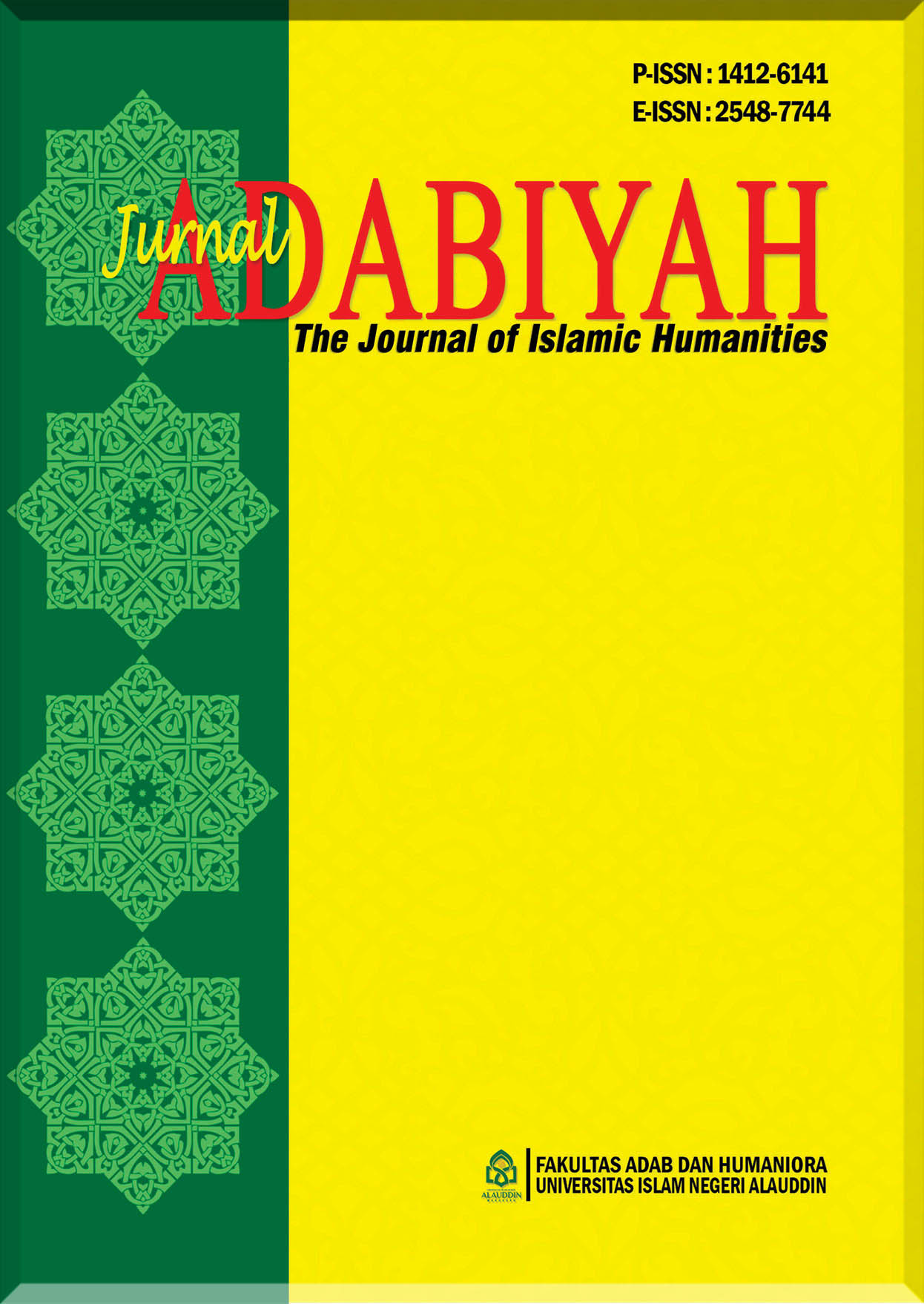Perumpamaan-Perumpamaan dalam Al-Qur’an (Amsal Al-Qur’an)
Main Article Content
Abstract
إن ا لقرآن الكريم هو كتاب الله الذى أنزله إلى خاتم الأنبياء و المرسلين سيدنا محمد صلوات الله عليه وسلامه لهداية البشر أجمعين . وهذا الكتاب مكتوب باللغة العربية وفيه بيانات و تعاليم للمؤمنين ومأمورات ومنهيات معبرة بعدة طرق أو أساليب من خبرية و إنشائية أو محاورة و جدل وتشبيهات أو أمثال و غيرها. فالعلماء البلاغيون والمفسرون منذ زمن بعيد كانوا يهتمون و يطالعون ويتعجبون بهذه الأساليب القرآنية الجميلة . فمن تلك الأساليب هي أمثال القرآن أو تشبيهات القرآن . فعلماء القرآن يرون أن أمثال القرآن تختلف عن أمثال فى إصطلاح الأدب العربى الذى أطلق المثل على قول محكي سائرأو جمل قصيرة و جيزة تدل علي صحة الرأي وصدق الإختبار. فأمثال القرآن أوسع من الأمثال فى الأدب العربى و البلآغة فهى تشمل تشبيهات وحكم وتمثيلات.ولذلك فقد قسمت أمثال القرآن إلى مصرحة وكامنة و مرسلة. ومنهم من قسم الأمثال إلى تمثيل بسيط و تمثيل مركب . فمن فوائد أمثال أو تشبيهات القرآن الترغيب و الترهيب والوعظ والحث والزجر والإعتبار وتقريب المراد للعقل.
Downloads
Article Details
COPYRIGHT AND LICENSE STATEMENT
COPYRIGHT
Jurnal Adabiyah is published under the terms of the Creative Commons Attribution license. Authors hold the copyright and retain publishing rights without restriction to their work. Users may read, download, copy, distribute, and print the work in any medium, provided the original work is properly cited.
LICENSE TO PUBLISH
1. License
The use of the article will be governed by the Creative Commons Attribution license as currently displayed on http://creativecommons.org/licenses/by/4.0.
2. Author’s Warranties
The author warrants that the article is original, written by stated author/s, has not been published before, contains no unlawful statements, does not infringe the rights of others, is subject to copyright that is vested exclusively in the author and free of any third party rights, and that any necessary written permissions to quote from other sources have been obtained by the author(s).
3. User Rights
Under the Creative Commons Attribution license, the users are free to download, reuse, reprint, modify, distribute and/or copy the content for any purpose, even commercially, as long as the original authors and source are cited. No permission is required from the authors or the publishers.
4. Co-Authorship
If the article was prepared jointly with other authors, the corresponding author warrants that he/she has been authorized by all co-authors, and agrees to inform his/her co-authors of the terms of this statement.
5. Miscellaneous
Jurnal Adabiyah may conform the article to a style of punctuation, spelling, capitalization, and usage that it deems appropriate. The author acknowledges that the article may be published so that it will be publicly accessible and such access will be free of charge for the readers.
References
Abu Syuhbah, Muhammad, al-Mudkhal li dirasat al-Quran al-Karim, Dar al-Liwa, Riyadh, 1987.
Farrukh, Umar, Tarikh al-Adab al-‘Arabiy, jil.1, Dar al-‘Ilm lil malayin, Beirut, 1981.
‘Isa, ‘Abd al-Jalil, al-Mushhaf al-Muyassar, cet.iii,Dar al-Qalam, Kairo.
Al-Maydani , ‘Abd ar-Rahman Hasan Habnakah, al-Amsal al-Quraniyyah, cet.1, Dar al-Qalam, Beirut, 1400 H./1980.
Syahatah, Abdullah Mahmud, ‘Ulum al-Quran, Dar Gharib, Kairo
Ash-Shiddieqi, M.Hasbi, Sejarah dan Pengantar Ilmu al-Qur an Tafsir, cet.10, Bulan Bintang, Jakarta, 1986.
As-Suyuthi, Jalaluddin, al-Itqan fi ‘Ulum al-Quran, juz 2, Dar al-Fikr, Beirut, 1979.
Al-Shalih, Shubhi, Mabahits fi ‘Ulum al-Quran, cet.xvi. Dar al-‘ilm li al-malayin, Beirut , 1985.
Al-Zarkasyi, Badr al-Din Muhammad ibn ‘Abdullah,al-Burhan fi ‘Ulum al-Quran, Maktabat Dar al-Turats, Kairo.
Al-Zayyat, Ahmad Hasan, Tarikh al-Adab al-‘Arabiy, cet.xxvi, Dar
al-Tsaqafah, Beirut.

